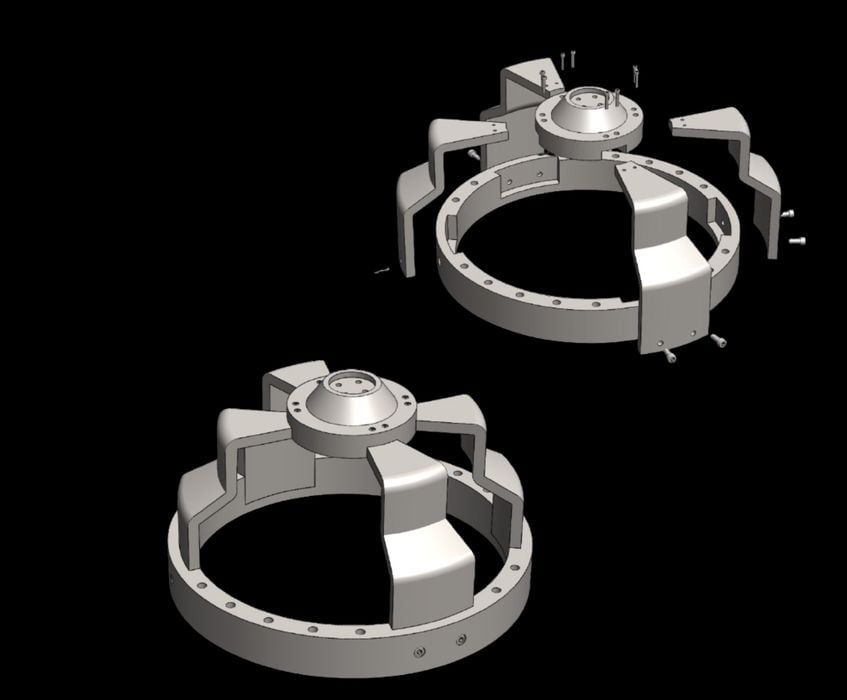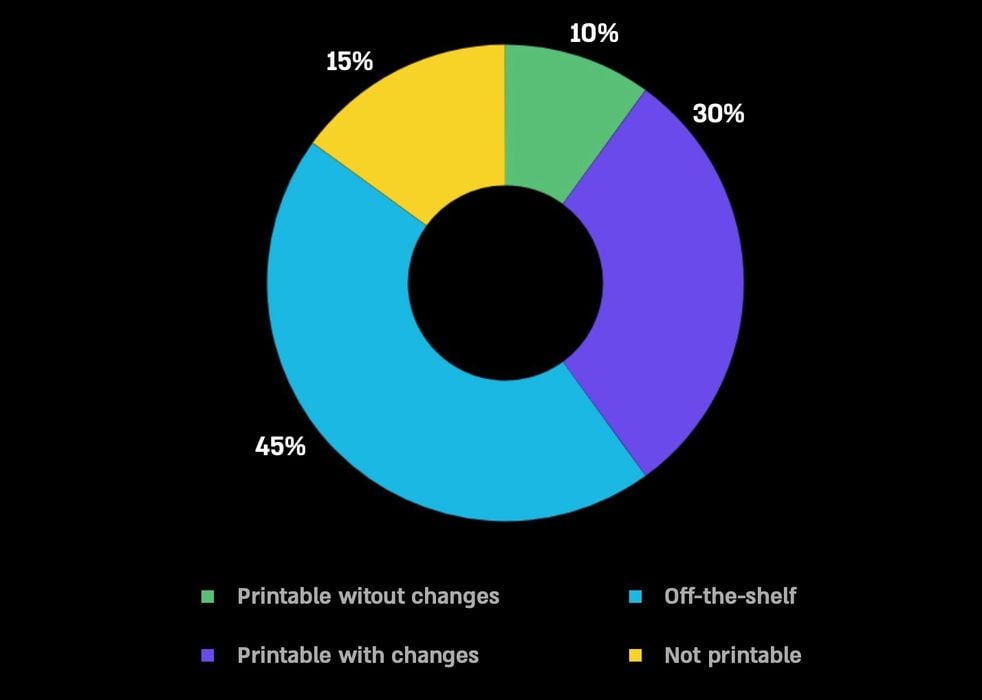
CASTOR released their 2021 annual Additive Manufacturing Trends Report, and it’s quite a bit different than you might think.
Plenty of AM companies release trend reports based on surveys of their user community. Often the questions and findings are quite similar, however. Typical findings might be:
- Increased spending on AM is expected
- More production parts are being produced
- Metal / Polymer materials are being used
- Etc.
But CASTOR’s report is different, and that’s because of the business they are in: part screening.
Part screening is the process of analyzing CAD files to determine whether the designs are suitable for additive manufacturing, and perhaps what design changes might be required to make them so. CASTOR’s key question is, “When does AM make sense?”
This process has been available from CASTOR and a few other companies for several years, and is often used when a company wants to move towards a digital inventory strategy. Digital inventory is a state where no physical spare parts are warehoused, and instead digital copies are used to quickly print spares when required. This is a vastly less expensive approach for handling spares — if the designs can actually be 3D printed.
This approach has been sought by many manufacturers during the pandemic, as their normal part suppliers have been less accessible due to supply chain challenges. Some have turned to additive manufacturing as a substitute, but the question quickly becomes, “which parts can I print?”
That’s where CASTOR’s service comes in. Their software is able to inspect CAD files of various formats to look for geometry that might suggest the part cannot be 3D printed. As an example, one failure might be that the part is simply too large to fit within the AM equipment, and would need to be split up. Another might be that there are features on the part that are smaller than achievable on the AM equipment.
This is the space where CASTOR’s trends report comes from: part screening.
What did they find out?
Here’s the most fundamental result of their research:

Apparently on average, ten percent of part designs can be immediately 3D printed, with another 30% able to be 3D printed with some changes. Apparently only 15% cannot be 3D printed for various reasons. The ‘off the shelf’ category represents parts that don’t have a good business case because they are commonly available. CASTOR explains:
“Around half of parts submitted as part of assemblies are off-the-shelf parts, such as screws, nuts and bolts, and these parts were never intended to be candidates for production by AM by virtue of them not being cost effective.”
CASTOR said they believe the ten percent number will rise over time as more companies invest in DfAM (design for additive manufacturing) and part designs evolve towards more printable results. They intend on tracking this figure in future research, and that should be quite interesting.
Now, of the parts that were considered printable, apparently 20% also could be 3D printed with cost savings. It’s not all about cost savings, however, as CASTOR explains:
“Break-even point in cost is often not as important at break- even point in time, especially in periods of disrupted supply chains, so a final analysis of whether to print or not needs to take into softer factors such as available lead time and other commercial considerations. In the case of spare parts, the cost of downtime could be a critical or dominant factor.”
But why were parts disqualified? CASTOR listed quite a number of reasons, but the two top reasons were:
- Inaccessible surfaces that require smoothing
- Residual heat stress occurring during printing
In looking at these and other reasons, it seems to me that many of them could be subverted by relatively straightforward changes. However, others, like “no AM material meets minimum properties”, could be challenging for years.
CASTOR produced a very interesting chart showing how savings per unit vary by part quantity for several traditional manufacturing processes. It turns out that the most savings are to be had when converting aluminum casting or injection molding to additive processes.
Another very intriguing finding is that 7.5% of parts could easily be reduced in weight by AM processes. While certainly some of those parts applications might not require weight reductions, many could. Around two percent could even gain greater than a 50% reduction in weight, which is quite significant.
The findings in this report are very different from other trend reports issued by others in the industry, and I strongly recommend everyone take a close look at CASTOR’s findings. They’re quite provocative, and will certainly cause you to look twice at your part inventories.
Via CASTOR
